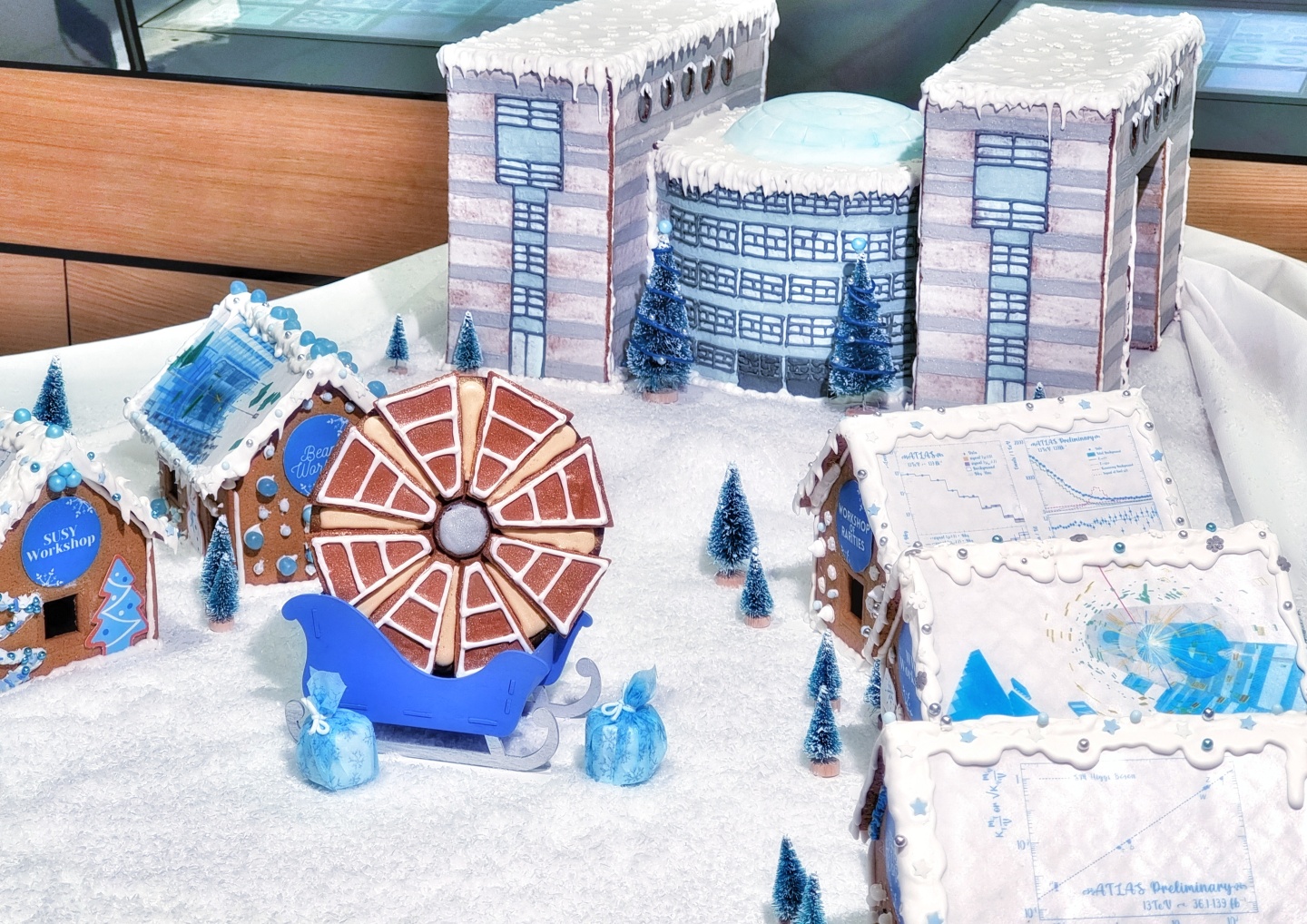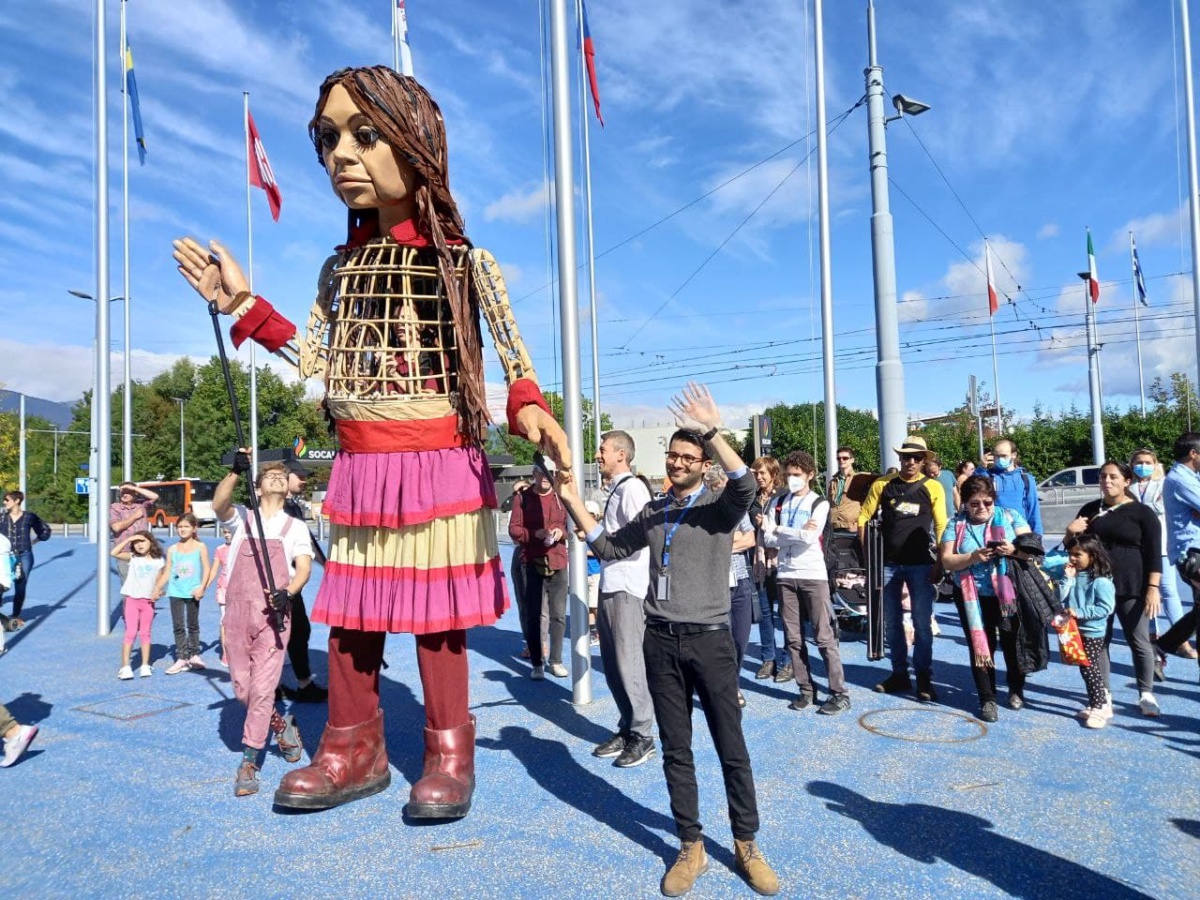Reaching out across cultures
5 January 2018 | By
This past Spring, I had the opportunity to travel to Taos, New Mexico, USA, to work with artist Agnes Chavez, on one of her “Projecting Particles” workshops. Her innovative programme aims to develop STEM (Science, Technology, Engineering, Math) skills in students aged 8 and up, employing a mixture of science education and artistic expression. It is a winning combination for everyone involved.
On ATLAS, we have the opportunity to contribute to a variety of tasks essential to running the experiment. These include detector and computing development, data analysis, and the communication of our results to other scientists and the public. Over the past several years, I have focused my efforts on public education, outreach, and communication, serving as our outreach coordinator, and currently as our public webmaster. I also chair a global network called the International Particle Physics Outreach Group (IPPOG), of which ATLAS is an active member.

As with other aspects of our experiment, contributing to outreach is not only essential to the success of the collaboration, it is also personally enriching, helping us to develop the skills needed to excel as scientists. We are tasked not only to explain complex physical phenomena, but also to examine and reaffirm the methods that have allowed humankind to build our wealth of knowledge. Given current anti-science rhetoric propagated by some key players in global politics, I personally take the challenge of clarifying the nature of scientific research very seriously.
Programmes combining science and art are proving to be highly successful. The Art@CERN artist residency, for example, has grown in size and stature since its inception in 2012, and is recognized for broadening global exposure to particle physics concepts and research. The fruitful marriage of these two fields is not surprising. Artists and scientists share an overwhelming curiosity about our universe and an innate need to communicate our findings. It is only the methods of expression that truly vary. In the case of young children, artistic expression of new concepts can be more accessible than rigid mathematics.
The Taos workshop brought an intriguing cross-cultural dimension to the table. Chavez invited cultural specialist, Steven Tamayo, to share customs and stories related to the cosmology of the Lakota people, a North American indigenous nation. Added to the mix were Shane Wood, a physics teacher and active member of QuarkNet (a US teacher-researcher network), and local educator Megan Bowers. The two teachers implemented a hands-on programme describing basic concepts of particle physics, while Tamayo and I shared time talking to and playing games with the students, immersing them in two contrasting but complementary worlds of cosmology.
We agreed there is a universal, human drive to make sense of the world we live in through mutual observation and agreement of facts that is independent of cultural assessment of meaning or belief.

The three-day workshop culminated with student teams producing animations to describe, in their own way, what they had learned about the origins of our universe. As a spectacular bonus, this art was projected at night on the walls of a tipi they had built following the traditional methods of the Lakota. While the images speak for themselves, to me they illustrate a deep appreciation of the common quest by humanity to understand our cosmos.
Following the workshop, I was privileged to participate in several round-table discussions hosted by Chavez, featuring Tamayo and Greg Cajete, a Tewa author and Director of Native American studies at the University of New Mexico. Cajete has published several books comparing and contrasting western and indigenous scientific methods, and it was a pleasure to have his insight.
Much of the discussion, including inquiries from the audience, focused on the originality of the project and on the contrast of methods employed by the various cultures. There were questions of varying ethical constraints, of the objective vs. subjective nature of inquiry, of story-telling vs. peer-reviewed journals. Yet, throughout all, there was a common thread that tied differing cultures together: data. That is, we agreed there is a universal, human drive to make sense of the world we live in through mutual observation and agreement of facts that is independent of cultural assessment of meaning or belief.
I find it reassuring, especially in this age of fast, frivolous communication, to know that there is a unifying appreciation of measurement that goes beyond geographical, political, and cultural borders. In my opinion, those of us involved in science education and outreach need to put a high priority on conveying this message, alongside our reports of scientific progress. If it is the natural inclination of youth around the globe to seek knowledge through experimentation, it is our job to give them the tools and encouragement they need to do just that. And that’s a job that gives me great pleasure.




